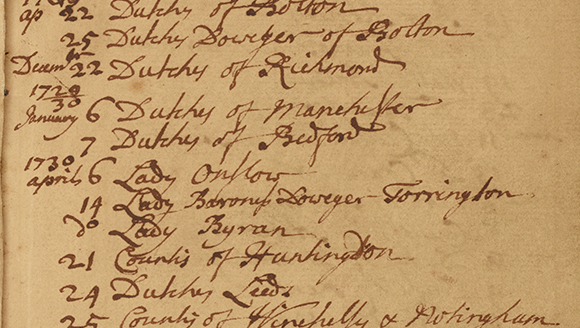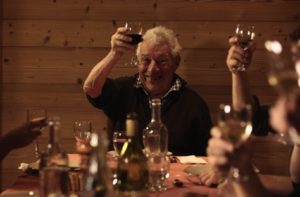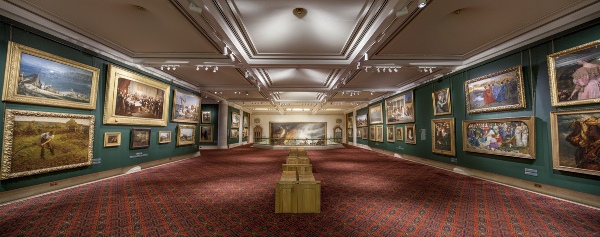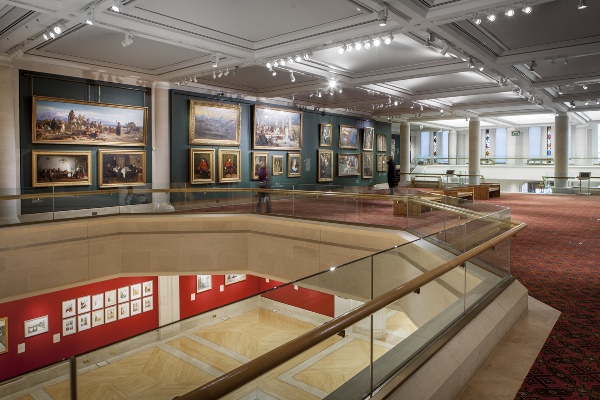Following the death of George Floyd in America on 25 May 2020, Dr Carmen Fracchia, Reader in Hispanic Art History, talks about art, slavery and what it means for modern society.

Isidro de Villoldo, The Miracle of the Black Leg, 1547: © Museo Nacional de Escultura, Valladolid, Spain.
The deliberate public torture and murder of George Floyd by Derek Chauvin, a former police officer in Minneapolis, on 25 May 2020 and the indifference to the black man’s pain shown by his killer and three police officers, Thomas K. Lane, Tou Thao and J. Alexander Kueng, immediately brought to my mind the most violent image of The Miracle of the Black Leg, made by the sculptor Isidro de Villoldo, in 1547 in Valladolid (Spain), then the royal seat of the most powerful Iberian empire in the Western world. In this small wooden panel, a mutilated African man lies on the floor while screaming with pain, following the removal of his left leg to have it grafted onto the patient by St Damian, while his brother St Cosmas is taking the sick man’s pulse and examining his urine in a vessel. This horrific scene takes place in a sumptuous setting, where there is a lavish application of the New World gold that was still readily available. The wealth that is exuded here is in stark contrast to the violence of the African amputee lying, in agony, on the ground. The ensuing horror of this image is amplified by the indifference shown by the white figures in the room towards the amputee’s excruciating sacrifice. Medieval legends of saintly healers, who perform miracles of body reparation, were written to counteract the revulsion felt at the fragmentation or dismemberment of bodies for political or scientific purposes that had become common in Western Europe at the end of the thirteenth century with the legalization of dissection practices in European centres and the public exhibition of body parts from criminals, associated with the practice of judicial punishments.
The narrative of the Valladolid image deviates from the three known legends (Greek, Latin, and Catalan) that inform the visual representation of this miracle enacted by SS. Cosmas and Damian, although the Latin legend is closest to it:
Felix, the eighth pope after S. Gregory, did do make a noble church at Rome of the saints Cosmo and Damian, and there was a man which served devoutly the holy martyrs in that church, who a canker had consumed all his thigh. And as he slept, the holy martyrs Cosmo and Damian, appeared to him their devout servant, bringing with them an instrument and ointment of whom that one said to that other: Where shall we have flesh when we have cut away the rotten flesh to fill the void place? Then that other said to him: There is an Ethiopian that this day is buried in the churchyard of S. Peter ad Vincula, which is yet fresh, let us bear this thither, and take we out of that morian’s flesh and fill this place withal. And so they fetched the thigh of the sick man and so changed that one for that other. And when the sick man awoke and felt no pain, he put forth his hand and felt his leg without hurt, and then took a candle, and saw well that it was not his thigh, but that it was another. And when he was well come to himself, he sprang out of his bed for joy, and recounted to all the people how it was happed to him, and that which he had seen in his sleep, and how he was healed. And they sent hastily to the tomb of the dead man, and found the thigh of him cut off, and that other thigh in the tomb instead of his. Then let us pray unto these holy martyrs to be our succour and help in all our hurts, blechures and sores, and that by their merits after this life we may come to everlasting bliss in heaven. Amen.
Jacobus of Voragine collected the Latin legend of the miraculous transplantation of the black leg in ‘The Lives of Saint Cosmas and Damian’ in his book The Golden Legend or Lives of Saints (1275), the most widely circulated stories of saints in Medieval and Renaissance Europe. In this Valladolid image, the first obvious departure from this legend is that the mutilated ‘Ethiopian’ is not a corpse from a cemetery, but an in vivo Afro-Hispanic man whose leg has been amputated whilst he is alive. It is impossible to grasp this violent image if we do not take into account the backdrop of the abolition of ‘Indian’ slavery in the New World in 1542 and the emergence there of a new system of slavery with the enslavement, capture, and export to the Americas of Africans, a trade that was directly promoted by the Crown and the Cardinal Inquisitor Francisco Jiménez de Cisneros, but also by Bartolomé de Las Casas. The latter expresses pastoral concern only about Native Americans and actively contributes to the export of black slaves to New Spain in the years between 1516 and 1543, an action that he came to regret (1545–7), some time before the end of the famous Valladolid debate with Juan Ginés de Sepúlveda about the soul of the Native Americans (1550–1). This horrific imagery is symbolic of not only the process of colonization in the Spanish empire, but above all the appropriation of the black body and the violence of slavery, the paradoxical emergence of the commodified domestic Christian Afro-Hispanic slave, and the encounter with free Christian European subjects. The shocking thing is that the worth of the black mutilated man is defined vis-à-vis his total subordination to his white master. To be a black person in imperial Spain, between the last quarter of the fifteenth century until the end of the eighteenth century meant to be a chattel, a piece of property, to be hired, bought and sold as a precious commodity at auctions; to become objects of material exchange: traded to save the donor’s soul, gifts, dowry, and, heritage; money to pay debts, to settle accounts in lieu of mortgages, and rents. To be a black person meant to be owned by a slave master and to suffer punishment at any sign of rebellion against this complete dehumanization in a society where the word ‘black’ and the physical appearance of blackness were signifiers of the specific social condition of slavery. Besides, to be a black person also meant to become a strategic resource for the colonization of the New World.
Africans and their descendants anywhere in the globe do not need to learn from us that the institution of slavery is a crime against humanity. They had experienced the dehumanisation process inherent in the workings of slavery every day, every hour, every minute, every second of their lives for the last five centuries. The killing of Mr Floyd shows that we are still stuck in the effects of the transatlantic slavery, originally institutionalized by the Iberian empire that was partly responsible for the presence of approximately two million slaves living in the Iberian Peninsula and islands during the early modern period.
The problem is not the African diaspora. The problem is our attitude toward the Other, in this case towards Africans and their descendants. We need to change our attitude and to become more aware of their history and of their secular sacrifice to their master. We never experienced the lack of total freedom, the nature of total subordination to a master. And we never allowed Africans to be totally free. They could become freed women and freed men which is not the same as free women and free men. The deliberate killings of black people systematically show that we still consider Africans and their descent as our slaves. We believe in their sense of inferiority and we still demand their unconditional services to us because thanks to us they became ‘human’ and ‘civilised’. We still demand their total sacrifice of their life, talents, and contributions to our societies as their obligations towards us, because they owe us their wellbeing, their freedom, education, and, careers. After all, they are now civilised because we rescued them from being wild, barbarians and pagans. We taught them how to become Christians. They should be thankful for these opportunities we gave them in life, so much so that if we need their leg to heal our body, we’ll take it with no consultation. If we need their life to achieve our aims, we take them. The evidence is the death of George Floyd. How long will it take for us to believe that the African diaspora in the Americas and in Europe are no longer our slaves?
Perhaps we could learn from another Spanish image: the portrait of the enslaved painter Juan de Pareja (c.1606, Antequera, Málaga–c.1670, Madrid), by his celebrated master, Diego Velázquez, court painter to Philip IV, King of Spain, which was made (1649) and exhibited to great acclaim in Rome during the Jubilee year of 1650, before Velázquez emancipated Pareja in Rome on 23 November 1650. In his half-length portrait, Velázquez’s slave is seen looking directly at the viewer, holding his right arm across his waist and standing against an undefined brown-and-black back- ground. Pareja is portrayed as a Spanish gentleman wearing a dark grey velvet doublet and coat with an exclusive white lace collar from Flanders, ‘forbidden in Spain to free men and shunned by Philip IV, who favoured austere dress’. In this extant portrait, now at the Metropolitan Museum of Art (New York), the sitter is the sole figure and his powerful gaze totally dominates the canvas and engages the viewer.
In his Juan de Pareja, Velázquez comes to elaborate the emergence of the slave subject in Hapsburg Spain. The court painter acknowledges and expresses the inner life of his slave by depicting his ‘thinking mind’ and the ‘perturbations of his soul’. Thus, Velázquez endows Pareja with his own humanity: his slave has an equal gaze to that of his viewers. The powerful sitter of this extraordinary portrait is not depicted as a subordinate subject as the sacrificial Ethiopian victim of the Miracle of the Black Leg. The slave Pareja is shown as a free subject even before his emancipation. Velázquez’s adoption and adaptation of the restrictive genre of portraiture to include his slave magnifies the effect of Pareja’s sense of humanity and worth. The depiction of a mestizo/mulato slave in a portrait defamiliarizes the essence of this genre and produces a dislocation in the viewer’s mind. Juan de Pareja transcends the hegemonic norm in imperial Spain and could only be regarded as oxymoronic. Velázquez’s powerful depiction of his slave provides the conceptual scaffolding and the form that Pareja uses in his own self-portrait as a freed slave and in the depiction of the emancipatory slave subject in his painting The Calling of Saint Matthew, produced for the Hapsburg court, one year after his master’s death in 1660, and now at the Museo del Prado (Madrid, only recently shown to the public).
The freedman Pareja managed to forge a career as a painter at the Spanish Court. The whereabouts of almost 20 out of the 30 paintings by the artist recently identified are still unknown, such as portraits of unidentified subjects and religious paintings. However, Pareja’s surviving works that are signed and dated are in the following museums: Museo del Prado and the Lázaro Galdiano Foundation, in Madrid; Hermitage Museum, Saint Petersburg, Russia; Museo de Bellas Artes de Valencia, Ringling Museum of Art, Sarasota, Florida.
We urgently need to recover the often hidden, invisible histories of the African diaspora and of their cultural contributions made to European and American societies. We can celebrate blackness as in this extract from the extraordinary poem, The Song of a Freedman (1700) by an anonymous Afro-Hispanic freedman, discovered in 1993:
I am black
Guinea is my homeland Black my body
and black my soul,
and black too
all my lineage,
my glory is to be black,
and I make celebration of it.
Further information:


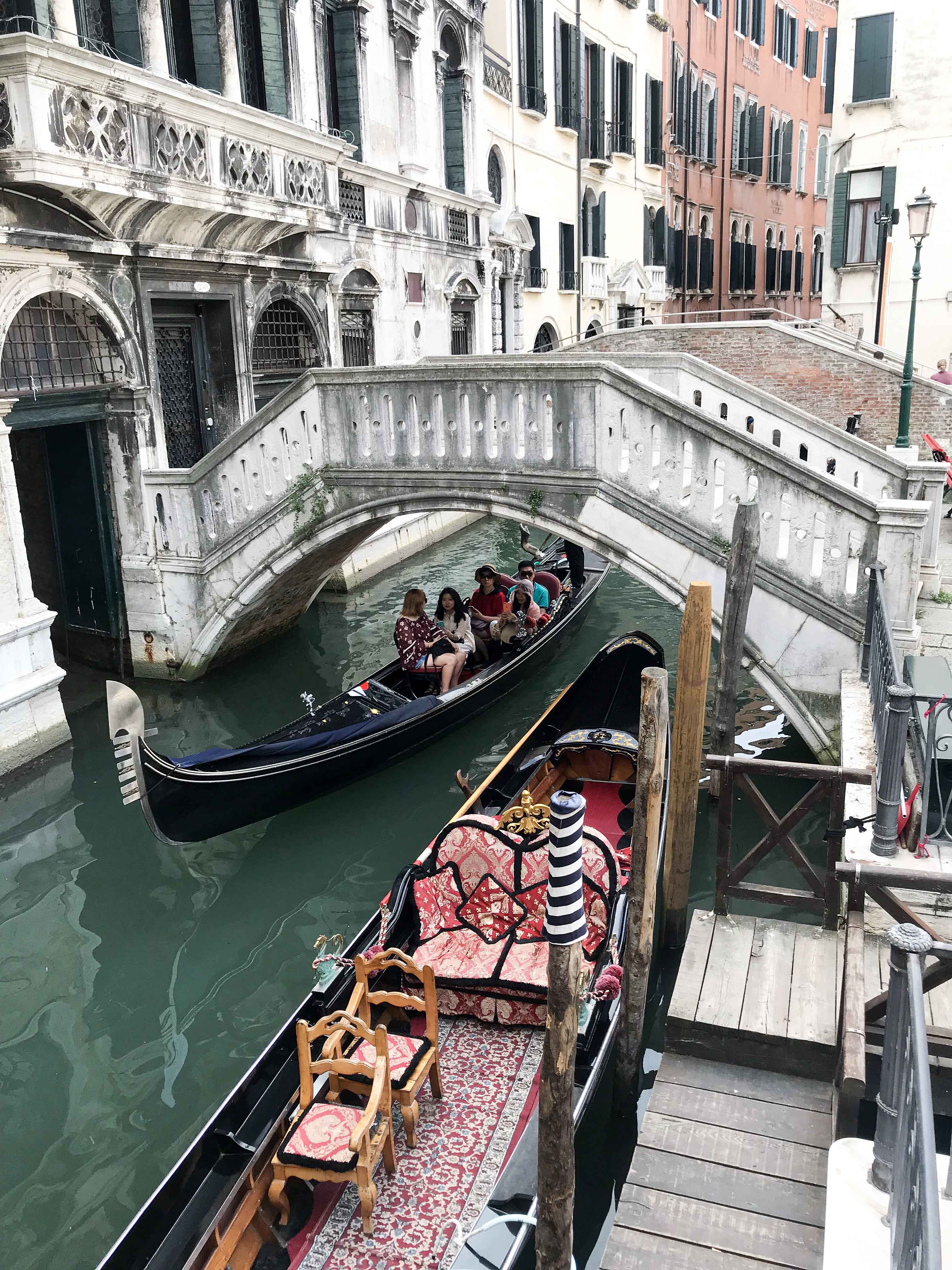 famed for its cicchetti and gelato and the beloved spritz. The historical landmarks, with their height and ornamental expressions of astonishing beauty, are also of course part of Venice’s reputation as a ‘must-visit’ destination. And, while the city is a wonderful representation of the value of tradition and heritage, Venice is equally known for its modern and contemporary art.
famed for its cicchetti and gelato and the beloved spritz. The historical landmarks, with their height and ornamental expressions of astonishing beauty, are also of course part of Venice’s reputation as a ‘must-visit’ destination. And, while the city is a wonderful representation of the value of tradition and heritage, Venice is equally known for its modern and contemporary art. research conducted just before I travelled, I was not prepared for all the ways the event is challenged when it comes to issues around sustainability and Venice’s economic state.
research conducted just before I travelled, I was not prepared for all the ways the event is challenged when it comes to issues around sustainability and Venice’s economic state.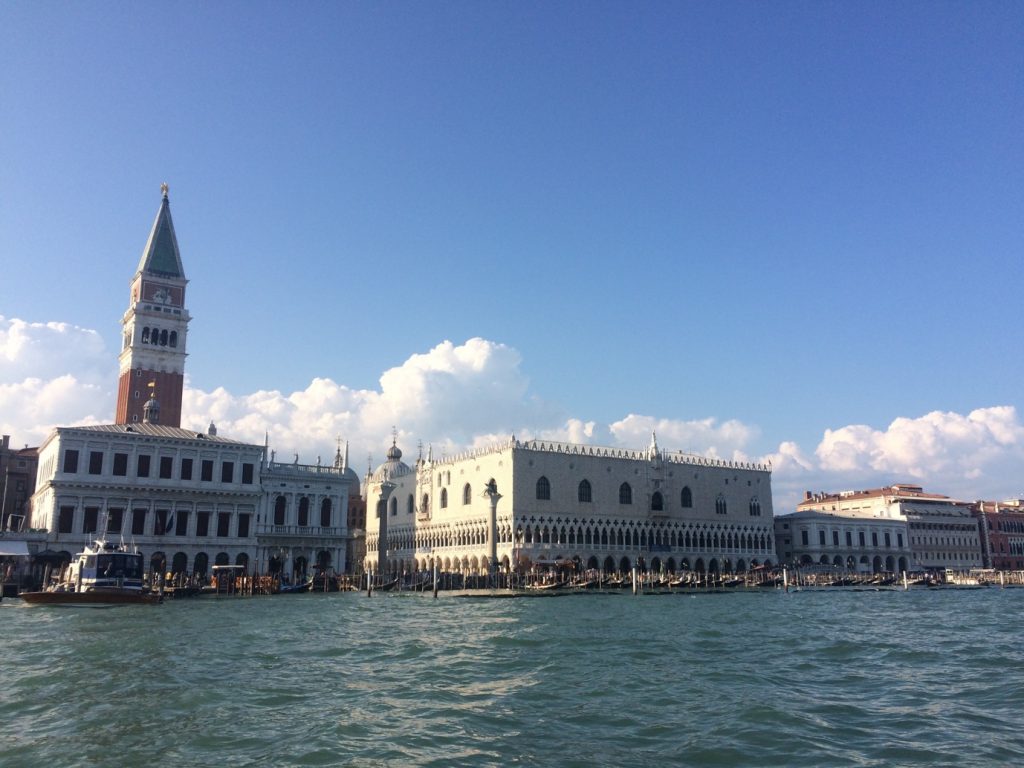
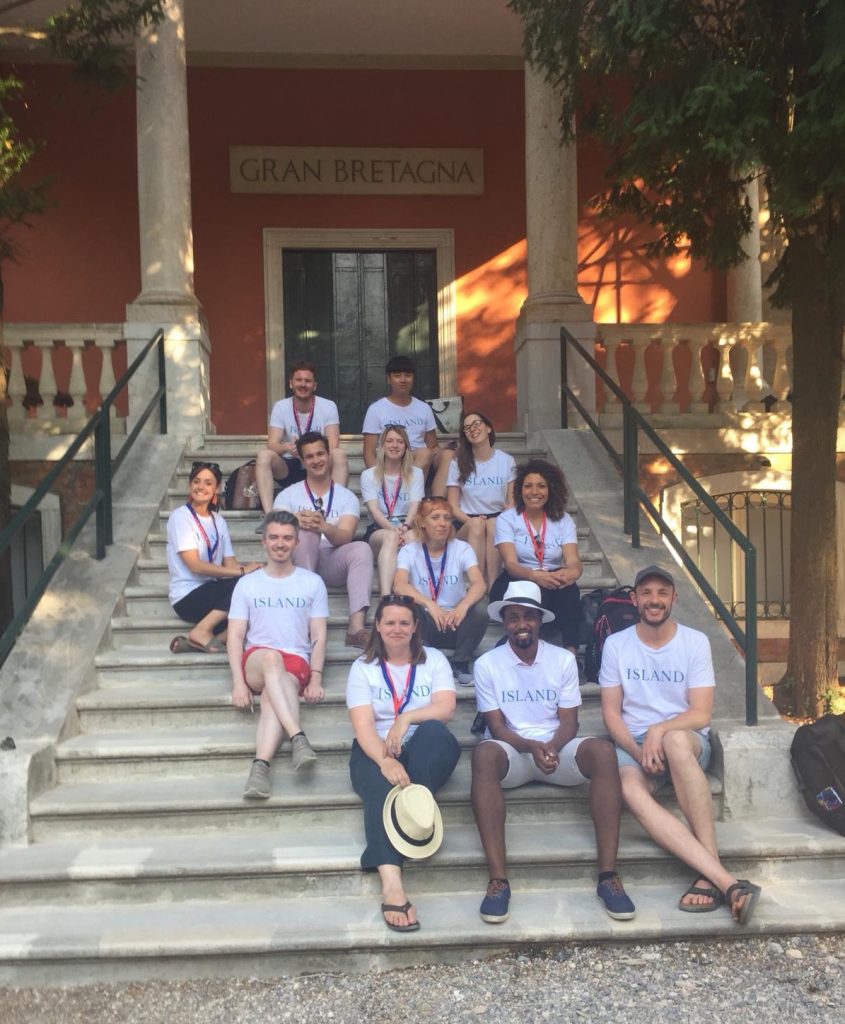 Upon my return to London, our group of fellows continued the discourse and organised an exhibition in August, held at a temporary space in Shoreditch. And it didn’t stop there; The British Council is keen to organise another show in the new year, featuring the research outcomes of Venice Fellows. I didn’t imagine that so many further opportunities would come along from this encounter.
Upon my return to London, our group of fellows continued the discourse and organised an exhibition in August, held at a temporary space in Shoreditch. And it didn’t stop there; The British Council is keen to organise another show in the new year, featuring the research outcomes of Venice Fellows. I didn’t imagine that so many further opportunities would come along from this encounter.